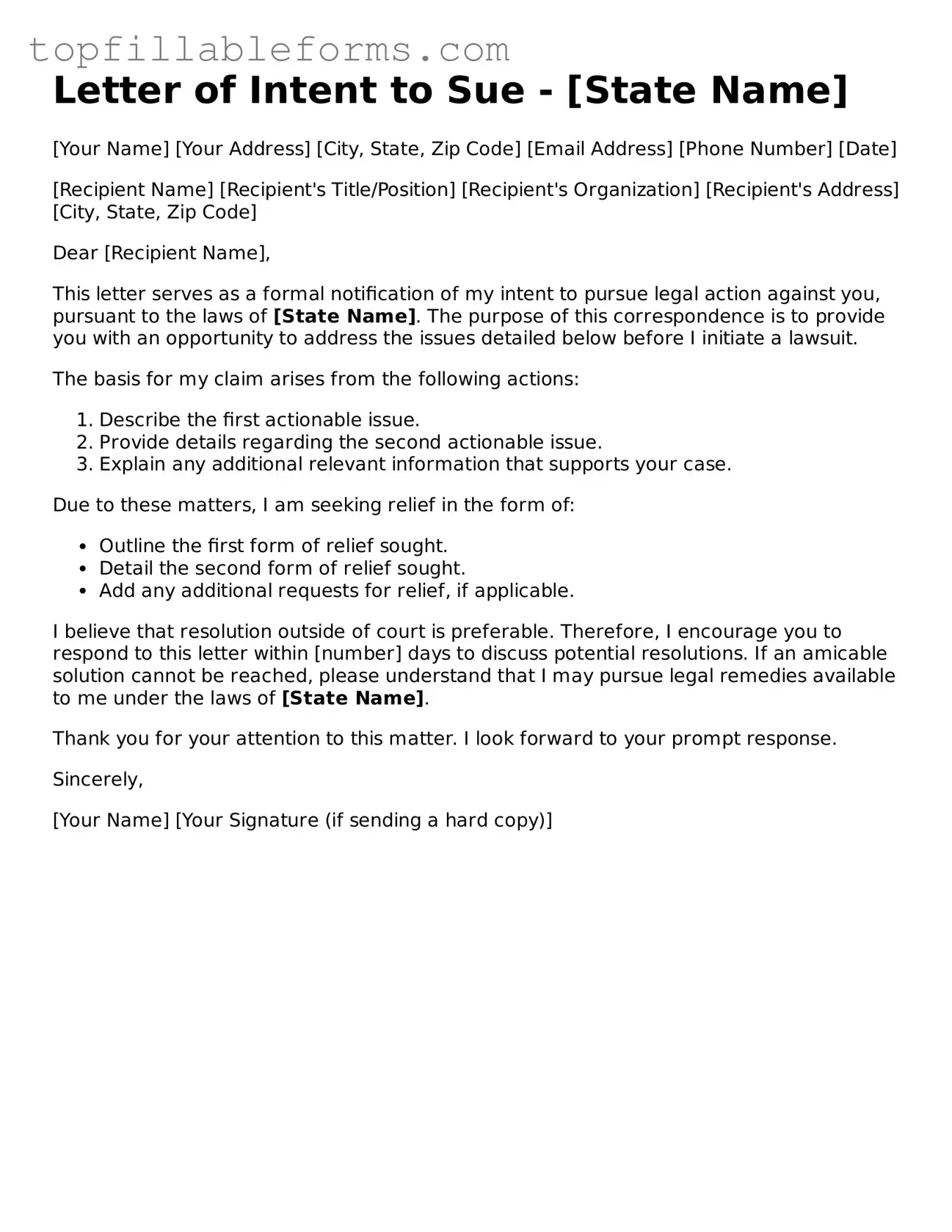Letter of Intent to Sue - [State Name]
[Your Name]
[Your Address]
[City, State, Zip Code]
[Email Address]
[Phone Number]
[Date]
[Recipient Name]
[Recipient's Title/Position]
[Recipient's Organization]
[Recipient's Address]
[City, State, Zip Code]
Dear [Recipient Name],
This letter serves as a formal notification of my intent to pursue legal action against you, pursuant to the laws of [State Name]. The purpose of this correspondence is to provide you with an opportunity to address the issues detailed below before I initiate a lawsuit.
The basis for my claim arises from the following actions:
- Describe the first actionable issue.
- Provide details regarding the second actionable issue.
- Explain any additional relevant information that supports your case.
Due to these matters, I am seeking relief in the form of:
- Outline the first form of relief sought.
- Detail the second form of relief sought.
- Add any additional requests for relief, if applicable.
I believe that resolution outside of court is preferable. Therefore, I encourage you to respond to this letter within [number] days to discuss potential resolutions. If an amicable solution cannot be reached, please understand that I may pursue legal remedies available to me under the laws of [State Name].
Thank you for your attention to this matter. I look forward to your prompt response.
Sincerely,
[Your Name]
[Your Signature (if sending a hard copy)]
